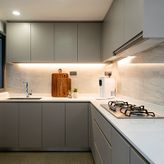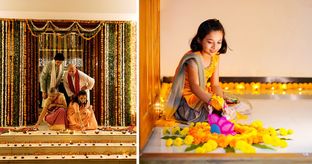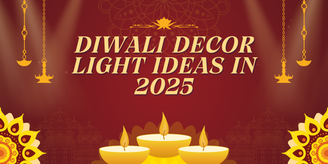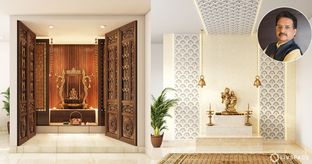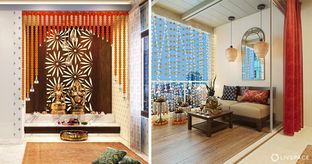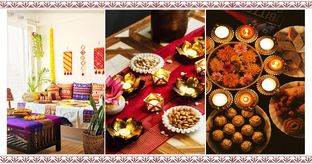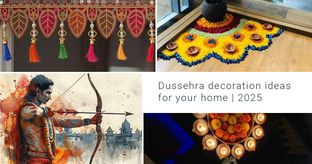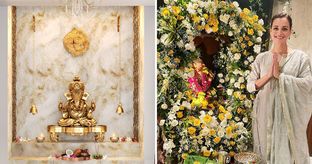In This Article
- Here are the different types of diyas Indians are using
- What is the significance of diya in Diwali?
- Trending diya design ideas for 2025
- Did you know the scientific reason behind lighting decorative diya in Diwali?
- What is the ‘right way’ to light a Diwali diya?
- Tip #1: The placement of the Diwali diya
- Tip #2: The timing makes all the difference!
- Tip #3: Metal and mud Diwali diyas usher in divinity
- Tip #4: Use ghee to banish negativity
- Tip #5: Straight wicks to attract superior deities
- What material diya is best according to Vastu?
- Where should diyas be placed for prosperity?
- Can diyas be oil vs ghee vs candle?
- How to light Akhand Diya?
- How to make the easiest Diwali diya at home?
- Colour psychology in decorated Diwali diya design
- Diyas for outdoor decoration
- How can Livspace help you?
There’s a particular moment, just as dusk surrenders to darkness, when the first Diwali diya flickers to life in an Indian home. It’s a ritual older than memory itself: hands cupping flame, shadows dancing on walls, the sweet scent of ghee mingling with anticipation. From the humblest clay diwali diya at home to elaborate decorative diya displays that transform courtyards into constellations, these tiny vessels carry the weight of centuries.
Whether you choose the timeless appeal of mud Diwali diyas or opt for a clay akhand diya that burns throughout the night, each flame represents hope, prosperity, and spiritual awakening during this most cherished festival.
Here are the different types of diyas Indians are using
1: Clay diwali diya
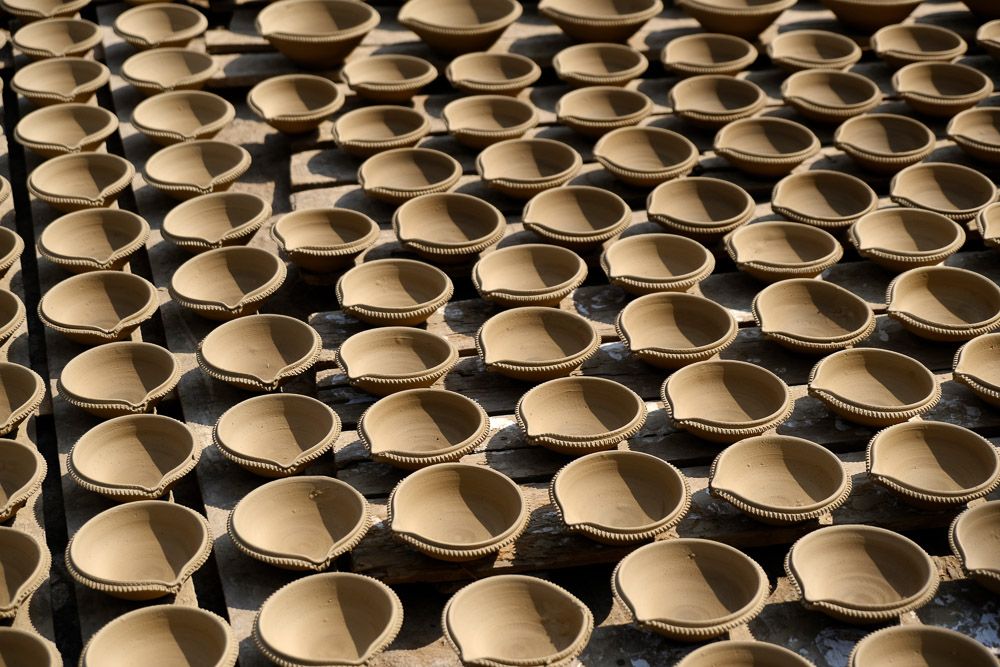
In the northern states of Uttar Pradesh, Bihar, and Rajasthan, clay diyas are the most popular choice. These handcrafted lamps are often decorated with intricate designs and patterns, symbolizing the goddess Lakshmi’s footprints.
Significance: The lighting of diyas in North India is believed to ward off evil spirits and attract Lakshmi, the goddess of wealth and prosperity.
2: Metal diwali lamp
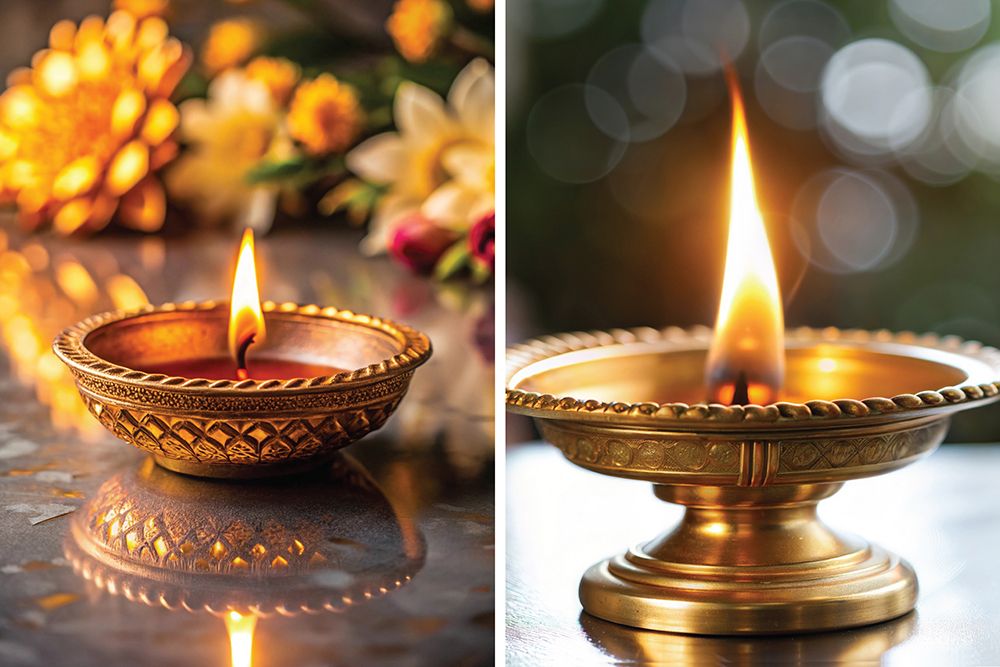
South Indian diyas are often made from metal, such as brass or bronze. These lamps are known for their durability and intricate carvings.
Significance: In South India, diyas are associated with the festival of Deepavali, which is celebrated to commemorate Lord Krishna’s victory over the demon Narakasura.
3: Bamboo decorated diwali diya
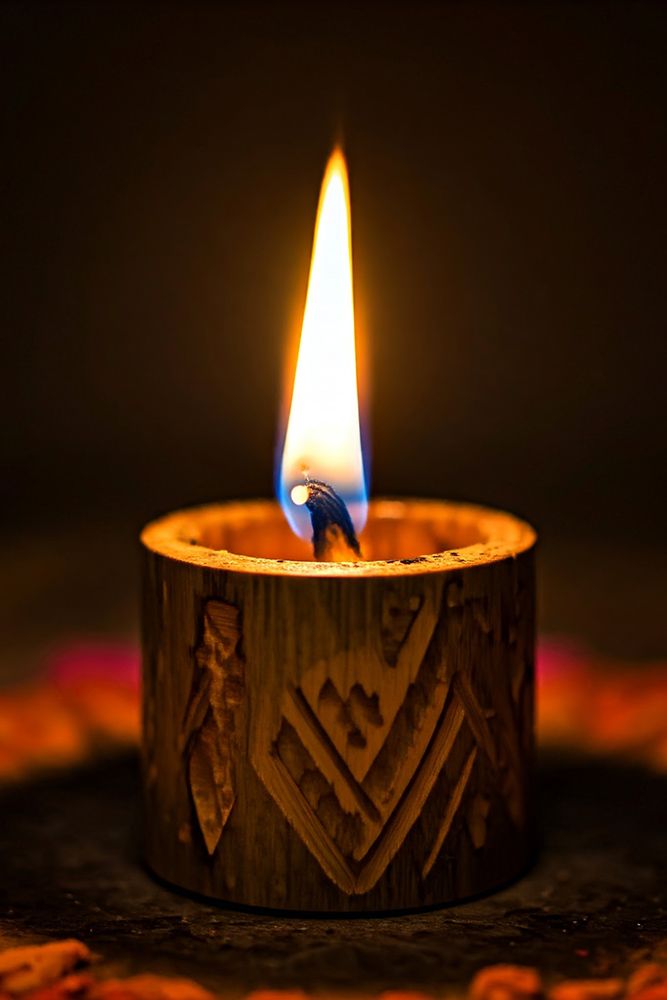
AI-generated image*
In the eastern states of Bengal and Odisha, diyas are often made from bamboo. These unique lamps are decorated with colourful designs and are lit with traditional oil lamps.
Significance: In East India, diyas are associated with the goddess Kali, who is believed to bring protection and prosperity.
4: Glass decorative diya
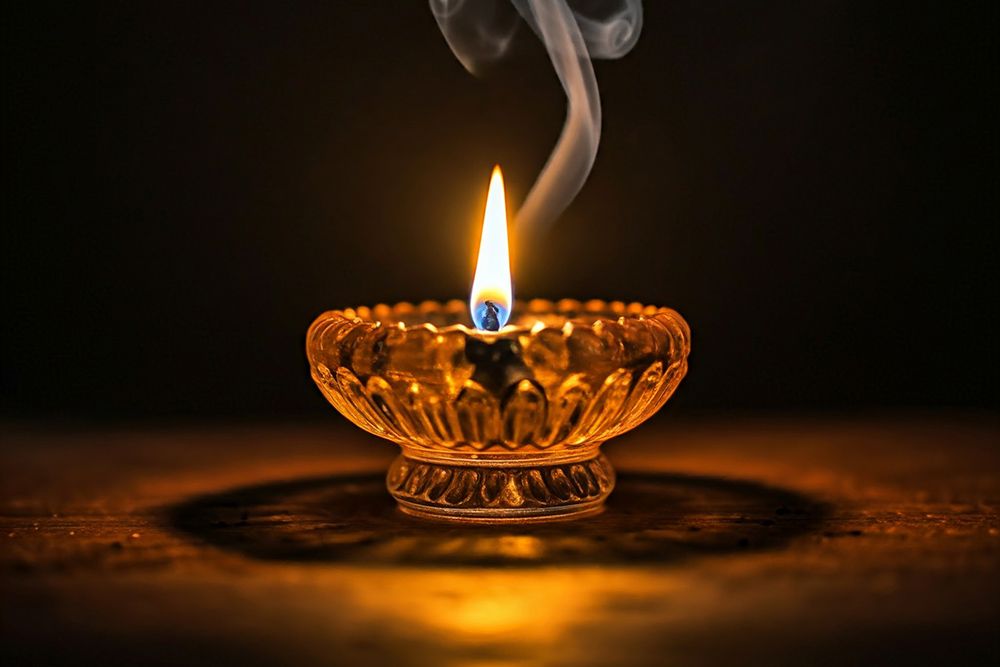
AI-generated image*
While glass diyas are used in various regions of India, they are particularly popular in urban areas where there is a higher demand for decorative and modern products. Cities like Delhi, Mumbai, Bengaluru, and Chennai are known for the widespread use of glass diyas during Diwali.
Significance: Glass, being transparent, is associated with purity and clarity. It symbolises the spiritual light that dispels ignorance and darkness.
5: Coconut shell eco diyas
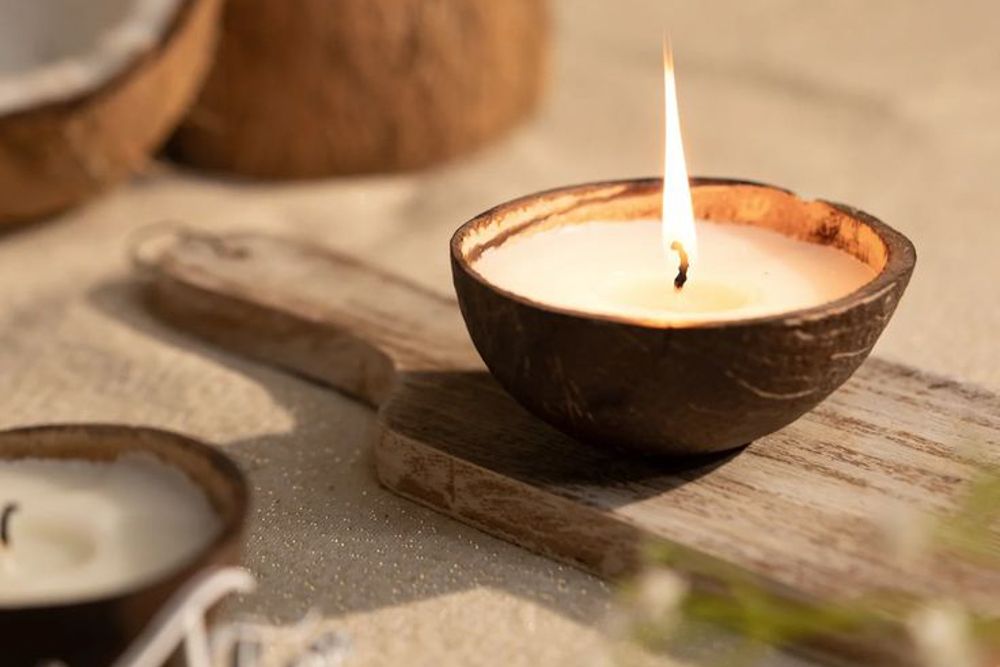
Image source: Pinterest @pdacua
Born from environmental necessity and nurtured by creative minds, these decorative diya alternatives have found their way from coastal workshops to urban drawing rooms. And rest assured that you will be doing your bit for the environment by utilising these shells and giving them a new life.
Significance: In Hindu mythology, the coconut represents the ego that must be broken to reveal the pure kernel within. When these shells become vessels for sacred flame, they embody the very essence of transformation—death becoming rebirth, waste becoming worship
What is the significance of diya in Diwali?

As per Vastu Shastra, people believe that the ghee or oil in a diya signifies negativity in your mind and the wick symbolises the Atma or soul. By lighting the diya, you dispel negativity from your mind and soul. This clears up space for positive thoughts to enter.
Diwali lighting signifies the victory of good over evil. Generally, we celebrate Diwali on Amavasya or the no-moon night. Lit diyas help to dispel the darkness of this night and radiate light.
In many parts of India, people worship the deities Lakshmi, Ganesha and Kuber on Diwali. By lighting diyas in different parts of your homes, you welcome them in, thereby ushering in good luck, wealth and prosperity.
Trending diya design ideas for 2025
Mandala patterns
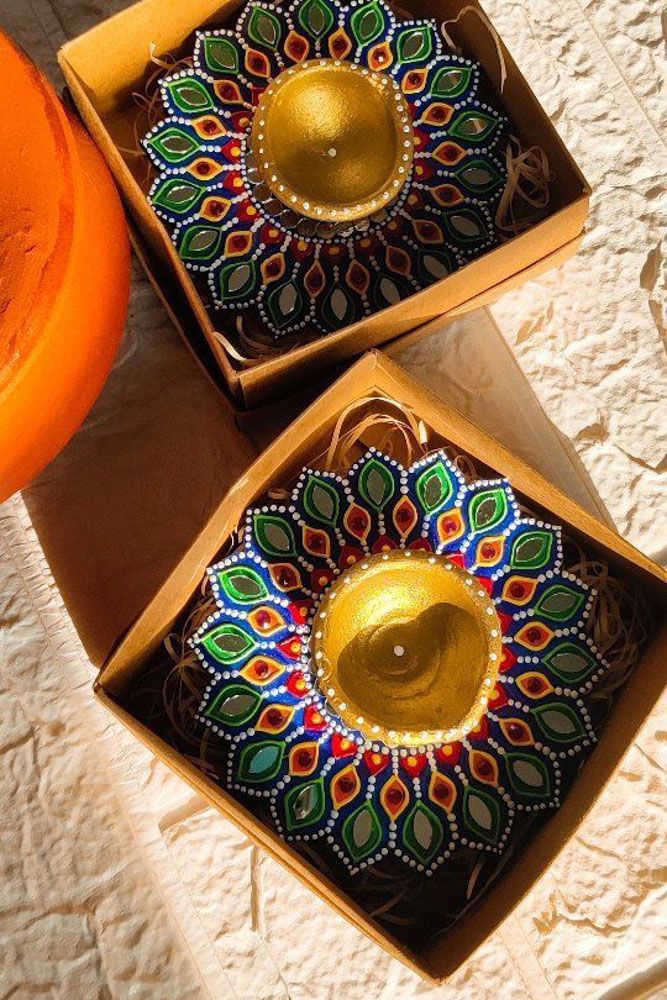
Image source: Pinterest @anchal22
Intricate geometric mandala designs painted on clay diwali diya create mesmerising patterns when lit. These decorative diya pieces serve as both functional lamps and artistic centrepieces for your festive décor.
Floating diya
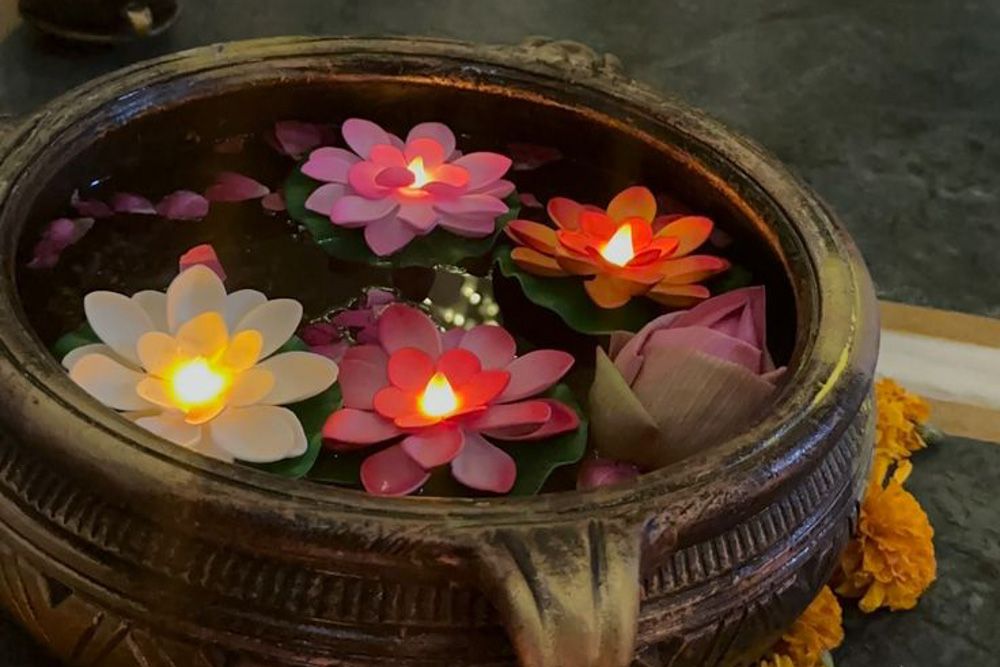
Image source: Pinterest @Siimpl_ybeautifulhomes
Transform your space with floating mud diwali diyas placed in decorative bowls filled with water and flower petals. This enchanting display creates a magical ambience perfect for modern celebrations.
Kundan art diya
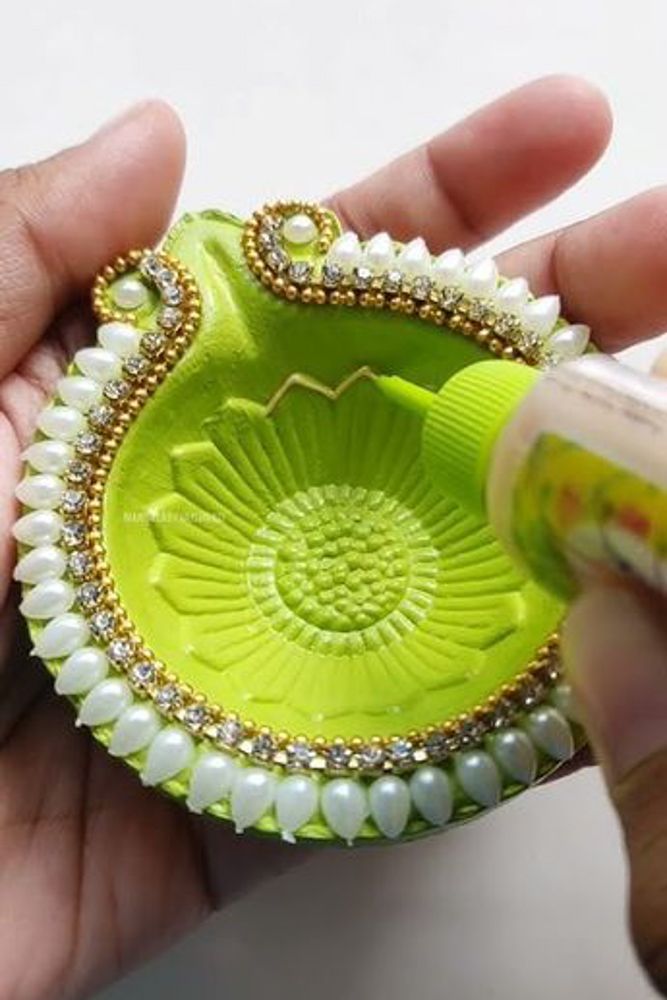
Image source: Pinterest @vbala2750
Embellished with sparkling kundan stones, these decorative diya designs add glamour to traditional lighting. The reflective elements amplify the flame’s glow, creating stunning visual effects throughout your home.
Did you know the scientific reason behind lighting decorative diya in Diwali?
When the diya is lit, it not only illuminates the area but also affects the surrounding environment. The humidity in the air rises, and as more diyas are lit, the temperature increases. During the winter, the air feels thick and heavy. Lighting a diya can help to clear and lighten the air.
What is the ‘right way’ to light a Diwali diya?
Tip #1: The placement of the Diwali diya
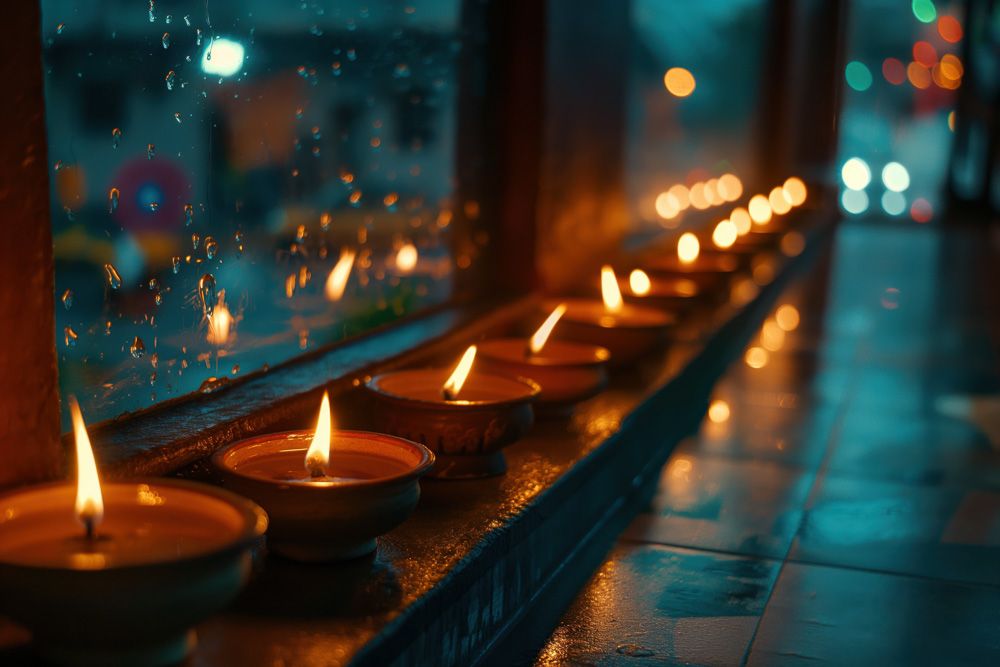
Whether you welcome positive or negative energies into your home depends upon where you place your diya. So, which direction should diya face for Diwali?
- Light the first diya in your pooja room
- Vastu associates the tulsi plant with Goddess Lakshmi. If you have a tulsi or holy basil plant as part of your pooja room design, place diyas near it
- If you do not own a tulsi mandir, place diyas in your kitchen
- Welcome wealth into your life, keep diyas facing north or northeast
- To improve your health, position diyas facing east
- Diyas kept near water containers can banish negativity, protect against diseases and increase wealth
Tip #2: The timing makes all the difference!
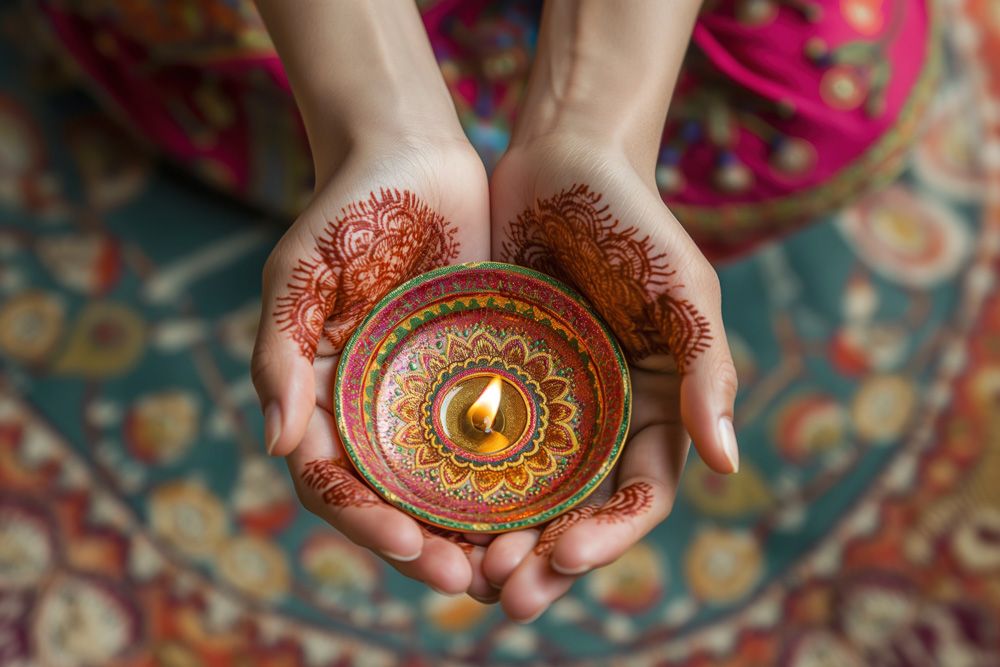
In Indian culture, time plays an important role. When it comes to Diwali diya lighting, this is what Vastu experts say:
- Goddess Lakshmi only enters well-lit homes
- Thus, begin lighting diyas after the Lakshmi puja to welcome her into your home
- Keep the diyas lit throughout the night to ensure that darkness and negative spirits do not enter your home
Tip #3: Metal and mud Diwali diyas usher in divinity
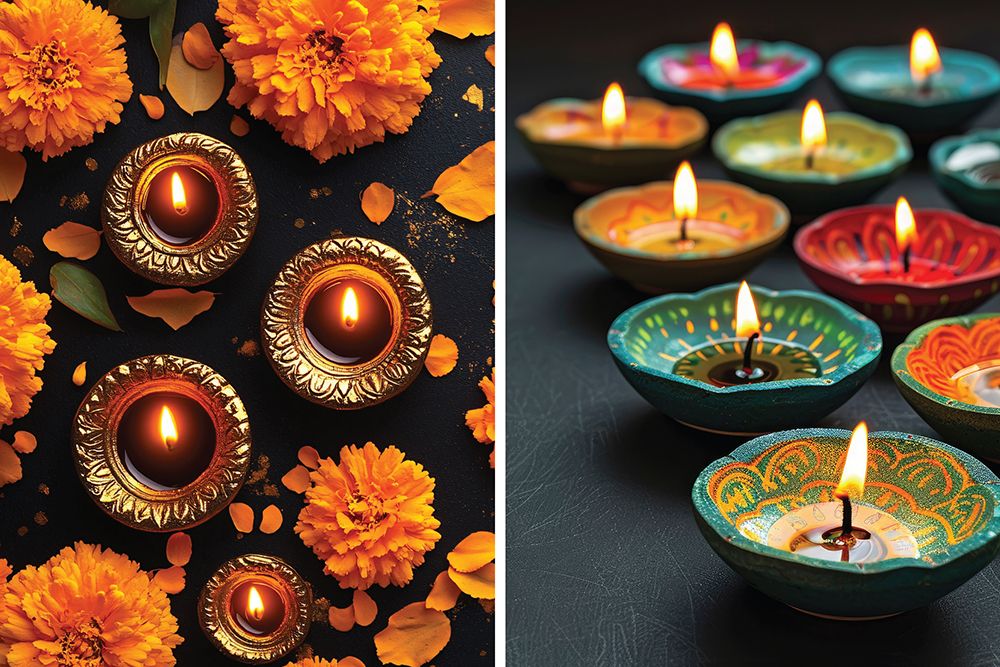
The material of your diyas can significantly affect the flow of holy energies into your home. Thus,
- Use brass or mud diyas to attract positive vibes into your home and dispel negativity
- Metals like brass are good conductors of positive energy
- Mud is a good reservoir of good spirits
- Using brass and mud diyas creates a happy and contented aura in the house
Pro tip: Use the following colours for diya painting to create a happy home – blue for the north, green for the east, red for the south, dark blue for the west, orange for the southeast, pink or grey for the southwest and blue or grey for the northwest.
Tip #4: Use ghee to banish negativity

Generally, we use ghee or oil while lighting diyas. Which is the better option?
- Use ghee in diyas as it contains stronger divine particles than oil
- Ghee diyas emit sattvik or divine frequencies, filling your home with happiness
- Only use ghee prepared from cow’s milk
- While you can also use mustard oil, avoid using sunflower oil
Tip #5: Straight wicks to attract superior deities
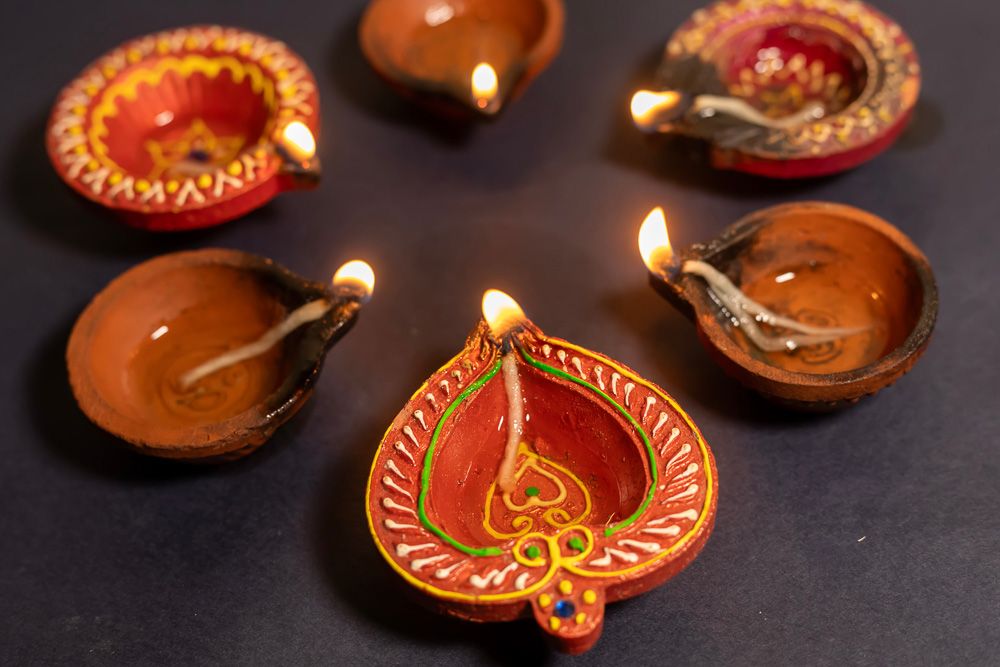
You can either use straight wicks or puffed wicks to light diyas. Confused about which to choose? Here is what Vastu experts say:
- It is always better to use straight wicks instead of puffed wicks
- Straight wicks attract superior deities while puffed wicks attract inferior ones
- The straight wick signifies the absolute fire element
- This heralds positivity and happiness in the mind of the worshipper
Apart from these Vastu tips, you should keep in mind that a Diwali diya should remain burning throughout the night. Vastu Shastra considers a burning diya to be auspicious. For this purpose, people generally use an Akhand diya. An Akhand Diya or Akhand Jyot is an unbroken flame. Here, the question arises, how to light Akhand diya to keep it burning? The following pointers will help you.
What material diya is best according to Vastu?
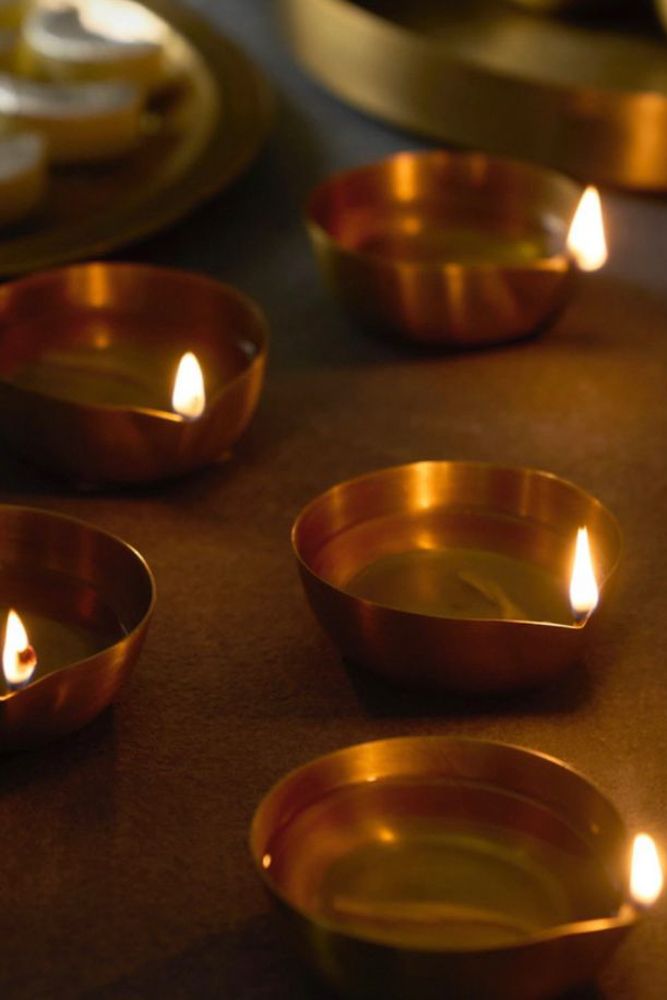
Image source: Pinterest @divyaina
According to Vastu Shastra, brass, clay, copper, and silver are considered the most auspicious materials for diyas. Clay Diwali diya at home are particularly recommended as they connect with earth energy and attract positive vibrations. Brass and copper enhance prosperity, while silver promotes spiritual growth and purification during Diwali celebrations.
Where should diyas be placed for prosperity?
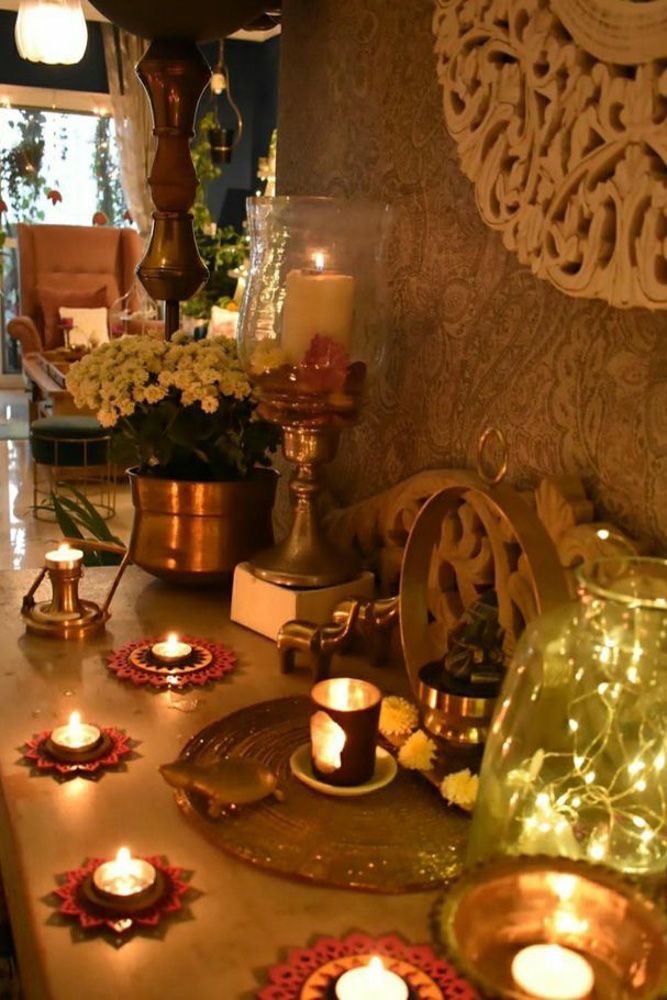
Image source: Pinterest @yogendra406_
For maximum prosperity, place your clay akhand diya in the northeast corner of your home, facing north. Position decorative diya arrangements near the main entrance to welcome wealth. A clay Diwali diya should be placed in the pooja room, kitchen, and around tulsi plants to attract Goddess Lakshmi’s blessings and ensure continuous abundance.
Can diyas be oil vs ghee vs candle?

Image source: Pinterest @Godloverkb
Traditionally, mud Diwali diyas are best lit with pure cow ghee, which emits the highest divine frequencies according to Hindu scriptures. Mustard oil is acceptable as a secondary option, while sunflower oil should be avoided. Candles lack the spiritual significance of flame from natural fuel in authentic lighting practices.
How to light Akhand Diya?

Burning of the Akhand diya holds special significance on Diwali. Diyas that remain lit throughout the night keep evil forces away from your home on the moonless night of Diwali. In addition, a diya that is lit all night is meant to show light and welcome Lakshmi and Ganesha.
- Keep filling the Akhand diya with ghee (or oil) at regular intervals
- Keep the diya covered at all times. You can use a glass cover
- If the wick goes off, do not re-burn it. Place a new wick beside the old one
Now that you know the Vastu rules behind Diwali diya lighting, you can go ahead and get yourself some exquisite diyas. You can also go all traditional this year and make them yourself. Wondering how to make Diwali diya at home? Help is on the way!
How to make the easiest Diwali diya at home?
Clay diyas, of course!
Step 1: Roll the clay into a ball

Slightly moisten your fingers and roll the clay into a smooth ball. Ensure the clay is well-conditioned, meaning it’s soft, pliable, and free of air pockets. If it’s too dry, add a small amount of water and knead it until it feels smooth. Before you start rolling, use a smooth, non-porous surface like glass, ceramic tile, or a silicone mat. Avoid surfaces that might absorb moisture or leave residue on the clay.
Step 2: Shape the clay ball
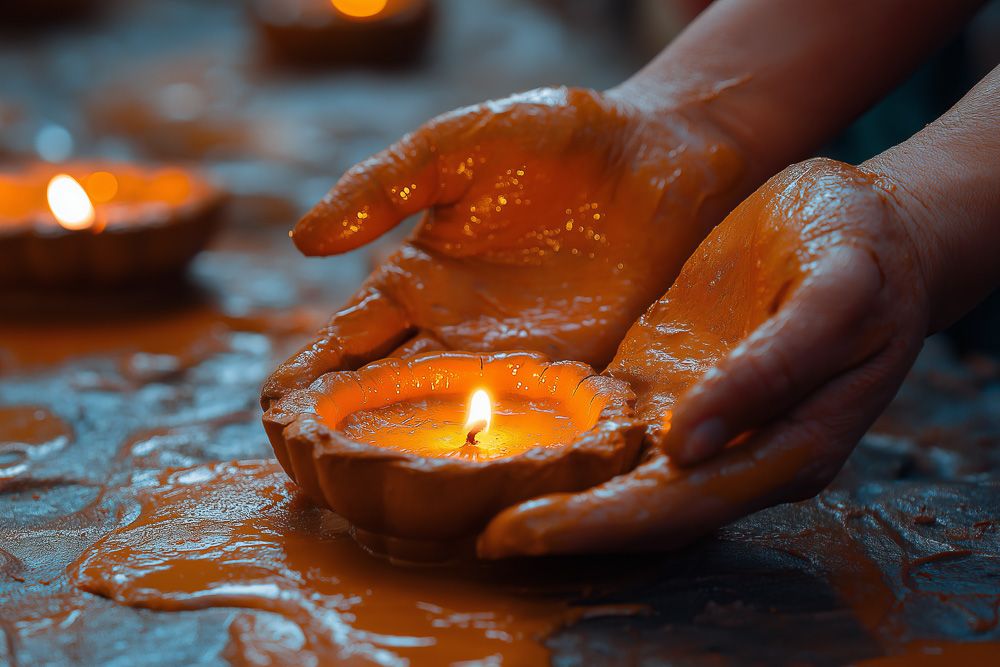
Use your hands to shape the clay ball into the shape of a diya (this might take a few tries to perfect!). You can also create other shapes if you want to add a contemporary twist to your diya. Next, place the diyas on a tray or drying rack and let them air dry.
Step 3: Diya painting
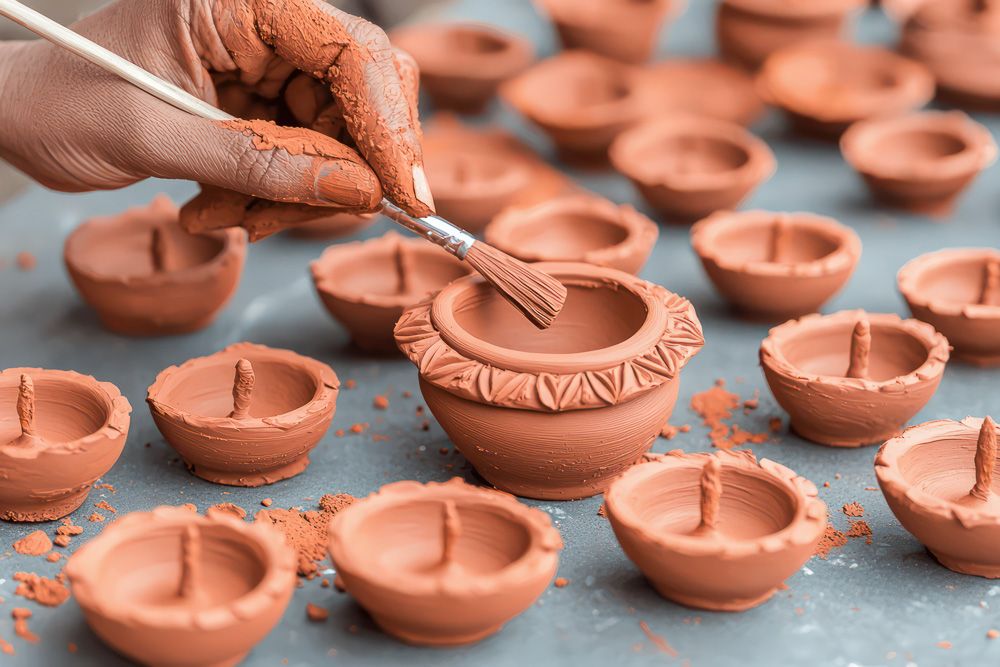
Once they are completely dry, paint them with the colours of your choice. Use the Vastu-compliant colours mentioned above for diya painting. Again, let them dry before use.
And just like that, your handcrafted diya is ready!
Colour psychology in decorated Diwali diya design
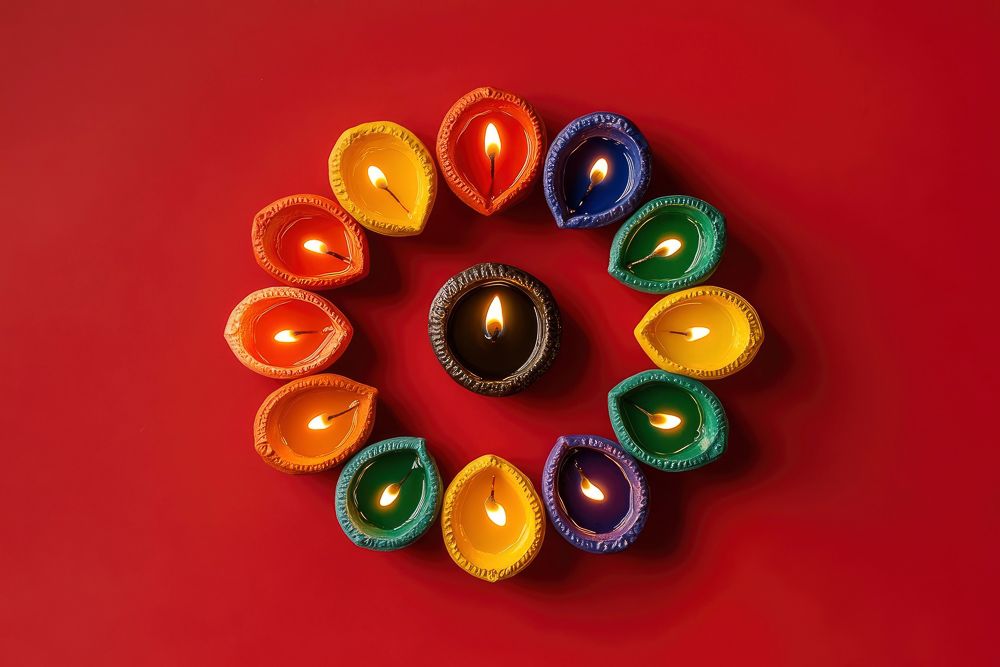
The colours used in decorated Diwali diya designs hold significant cultural and symbolic meanings. These colours often reflect the joyous and festive spirit of the festival, as well as various spiritual connotations.
Here are some common colours used in decorated Diwali diya design and their associated meanings:
- Red: Often associated with good luck, prosperity, and auspiciousness. Red diyas are believed to ward off evil spirits and bring positive energy into the home
- Orange: Symbolizes warmth, enthusiasm, and optimism. Orange diyas are thought to create a cheerful and inviting atmosphere
- Yellow: Represents happiness, joy, and intellectual enlightenment. Yellow diyas are believed to enhance mental clarity and focus
- Green: Associated with growth, harmony, and new beginnings. Green diyas are thought to promote peace and prosperity
- Blue: Symbolises tranquillity, spirituality, and wisdom. Blue diyas are believed to calm the mind and promote inner peace
- Purple: Represents royalty, luxury, and spirituality. Purple diyas are thought to elevate one’s spiritual awareness and connect with higher consciousness
Diyas for outdoor decoration
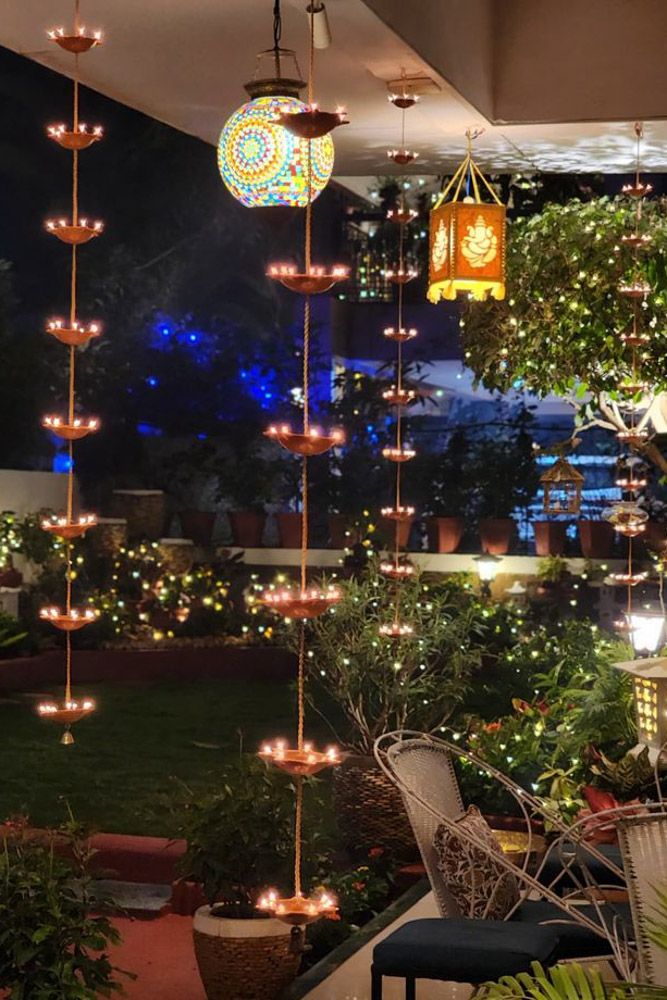
Image source: Pinterest @artbyarmaya
Clay diwali diya at home extends their welcome beyond thresholds, creating pathways of light that guide both guests and gods. String them along garden walls where their glow mingles with jasmine-scented darkness. Hang decorative diya clusters from ancient mango trees that remember other Diwalis, other flames. Use sturdy akhand diya designs with glass guards—the night wind can be jealous of such beauty, but properly protected, these mud diwali diyas will paint your landscape with liquid gold until dawn.
How can Livspace help you?
Understanding interior design costs is confusing. Lucky for you, our team of expert designers and project managers will make it simple. You don’t have to figure it out alone, and you definitely don’t need to make expensive mistakes that’ll haunt you every time you walk into your kitchen.
Looking for tailor-made costs for your home? Hit our Cost Calculator to jump into your financial planning.
Need inspiration beyond your current Pinterest spiral? Check out Design Ideas for professionally curated looks that actually translate to Indian homes and lifestyles.
Want to see what real people think? Browse through Livspace reviews from customers who’ve survived the renovation process and lived to tell the tale.
Ready to take the next step? Find an interior designer near you and let’s get started.
Disclaimer: All contents of the story are specific to the time of publication. Mentions of costs, budget, materials, finishes, and products from the Livspace catalogue can vary with reference to current rates. Talk to our designer for more details on pricing and availability.The Pinterest, Facebook, and Instagram images used in this blog are solely for illustrative purposes. We do not claim ownership of these images, and all rights belong to their respective owners. If you are the owner of any image and would like it to be removed or credited differently, please contact us.

















